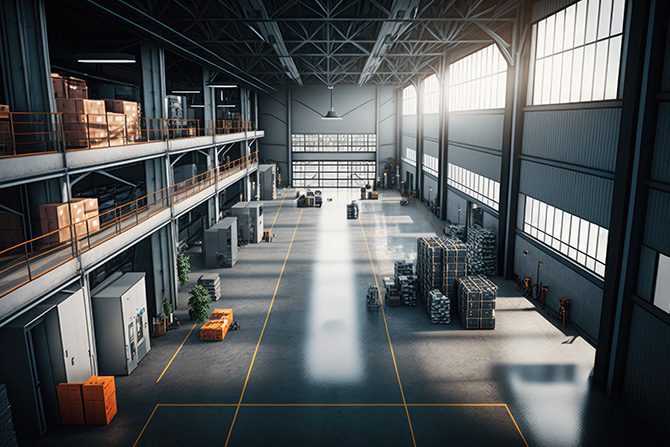
Are rising fuel costs, port congestion, and longer shipping times impacting your business? If so, you’re not alone. Due to this, the global logistics landscape is experiencing major changes.
Moreover, the continuous lockdowns, travel restrictions, and port congestion due to COVID-19 led to a shortage of products and materials. These disruptions have exposed weaknesses in long-distance supply chains, and manufacturers actively seek solutions. This has led to a surge in nearshoring, where production is moved to countries closer to the final point of sale.
This trend, coupled with evolving supply chain requirements, presents a unique opportunity for third-party logistics providers (3PLs) to position themselves as strategic allies to manufacturers.
The Rise of Nearshoring
Traditionally, companies have gravitated toward low-cost manufacturing hubs in distant locations. However, rising labor costs, long lead times, and geopolitical instability are forcing a reevaluation. Nearshoring brings production closer to the final destination and offers a compelling alternative.
According to a Deloitte survey, 33% of respondents indicated plans to move a portion of their operations closer to their primary markets within the next three years. General Motors offers a real-life example of implementing nearshoring to overcome the supply chain challenges caused by COVID-19 and geopolitical tensión.
The company shifted some of its production from Asia to North America. This move reduced lead times and transportation costs and improved supply chain resilience.
Here’s how the company benefitted::
- Shorter distances translate into faster delivery times, improving responsiveness to customer demands.
- Closer proximity to production facilities allows for tighter quality control and faster identification of potential problems.
- Nearshoring reduces dependence on a single geographic region, minimizing exposure to disruptions such as natural disasters or political unrest.

Nearshoring reduces transportation costs and shortens delivery times, providing faster and more affordable access to goods.
Beyond Nearshoring: How 3PLs Can Address Broader Supply Chain Trends
Several key supply chain trends are driving the expansion of the 3PL market. These include increasing e-commerce demand, the push for sustainability, and technological advancements.
E-Commerce Boom
The e-commerce sector has seen explosive growth, especially during the COVID-19 pandemic. The U.S. Census Bureau report shows that e-commerce sales in the United States jumped by 44% in 2020 compared to 2019.
But consumers expect faster deliveries and wider product availability. A study found that 73% of businesses are considering nearshoring to improve responsiveness
For example, Amazon’s reliance on 3PL providers like FedEx ensures faster delivery times and better customer service, which are critical in the highly competitive e-commerce market.
Sustainability Initiatives
Global warming is becoming a growing concern for eco-conscious consumers worldwide. A McKinsey report revealed that 67% of consumers consider sustainability when making purchases. As a result, companies are re-evaluating their supply chains to reduce carbon footprints and embrace green logistics solutions.
3PL providers are adapting by offering services such as optimized route planning, using fuel-efficient vehicles, and improved resource management. Many companies also strive to provide sustainable warehousing practices and proper waste management through recycling to mitigate carbon footprint.
Technological Advancements
The tech advancements such as Artificial Intelligence (AI) blockchain and the Internet of Things are transforming supply chain management.
A study by Gartner predicts that by 2025, 50% of global product-based businesses will invest in real-time transportation visibility platforms.
These technologies enable better tracking, transparency, and efficiency in logistics operations, benefiting 3PL providers who adopt them.
DHL, a leading 3PL provider, has implemented IoT technology to enhance its logistics operations. By using sensors and real-time data analytics, DHL can monitor the condition and location of shipments, ensuring timely deliveries and reducing losses.

3PL partners provide scalable solutions and the flexibility to adapt to fluctuating market demands, ensuring seamless logistics management.
Beyond Core Services: Value-Added Solutions
According to an NTT DAT report, warehousing was the most frequently outsourced activity, followed by domestic transportation, customs brokerage, and freight forwarding.
Progressive 3PLs go beyond core logistics services to offer a range of value-added solutions that make your supply chain more efficient and competitive. Nearshoring can introduce complexities in packaging, fulfillment, and handling returns. Partnering with a 3PL in your target market offers a strategic solution. Their expertise frees up your resources for core functionalities like product development.
They possess local knowledge of regulations and packaging best practices, ensuring efficient product delivery. Their compliance expertise ensures you adhere to local regulations, mitigating legal or environmental issues.
Additionally, their established infrastructure and carrier relationships offer scalability and cost-effectiveness compared to setting up your own fulfillment operations.
Managing returns and recalls effectively is even more critical in nearshoring. A robust reverse logistics program provided by a 3PL can streamline this process. Dedicated return centers within your nearshoring location facilitate faster processing and reduce transportation costs.
3PLs also leverage technology like return portals and automation to minimize manual work and improve data collection. The benefits extend beyond basic storage and fulfillment. Many 3PLs offer value-added services like light assembly, inventory management, labeling, and kitting.
Light assembly tasks like attaching labels or creating kits reduce your workload and lead times. Their inventory management expertise optimizes stock levels, minimizing stockouts or overstocking. Labeling and kitting services ensure products comply with local regulations and are ready for sale upon arrival.
By leveraging a 3PL’s expertise, companies can streamline nearshoring operations, focus on core business functions, and achieve greater supply chain efficiency.
Factors to Consider When Choosing the Right 3PL Partner
Choosing the right 3PL is critical to the success of your nearshoring strategy. Here are some key factors to consider:
Industry Expertise
Look for a 3PL with proven experience in your specific industry. A partner with industry-specific knowledge will understand your unique challenges and requirements, ensuring tailored solutions that drive efficiency and performance.
Financial Stability
Choose a financially sound partner with a strong track record. Financial stability indicates that the 3PL can invest in necessary resources and infrastructure, providing reliable and uninterrupted services.
Technology Infrastructure
Make sure the 3PL uses advanced technology to provide real-time visibility and efficient management. Cutting-edge technology allows for better tracking, transparency, and responsiveness, which are crucial for maintaining a competitive edge in today’s fast-paced market.
Scalability
Select a partner with the capacity and infrastructure to accommodate your future growth plans. A scalable 3PL can seamlessly handle increased volumes and expanded operations, ensuring your supply chain remains robust and agile as your business grows.
Communication and Collaboration
Look for a 3PL that prioritizes effective communication and collaboration. A collaborative partner will work closely with you, fostering a proactive approach to problem-solving and continuous improvement in your logistics operations.
Partnering with a 3PL: The Key to Supply Chain Resilience
In summary, the rise of nearshoring and the evolving supply chain landscape present a compelling case for manufacturers to partner with a qualified 3PL. By leveraging the expertise and resources of a 3PL, manufacturers can achieve greater efficiency, agility, and resilience in their supply chains. As the logistics landscape continues to change, a strong 3PL partnership will be a critical differentiator for manufacturers seeking to succeed in the competitive global marketplace.
If you are looking for a logistics partner that understands compliance and can help you manage your supply chain, look no further. At The ILS Company, we strive to offer customized 3PL solutions to meet your unique needs, while keeping you in the loop and supporting you throughout the process. Contact us today!


